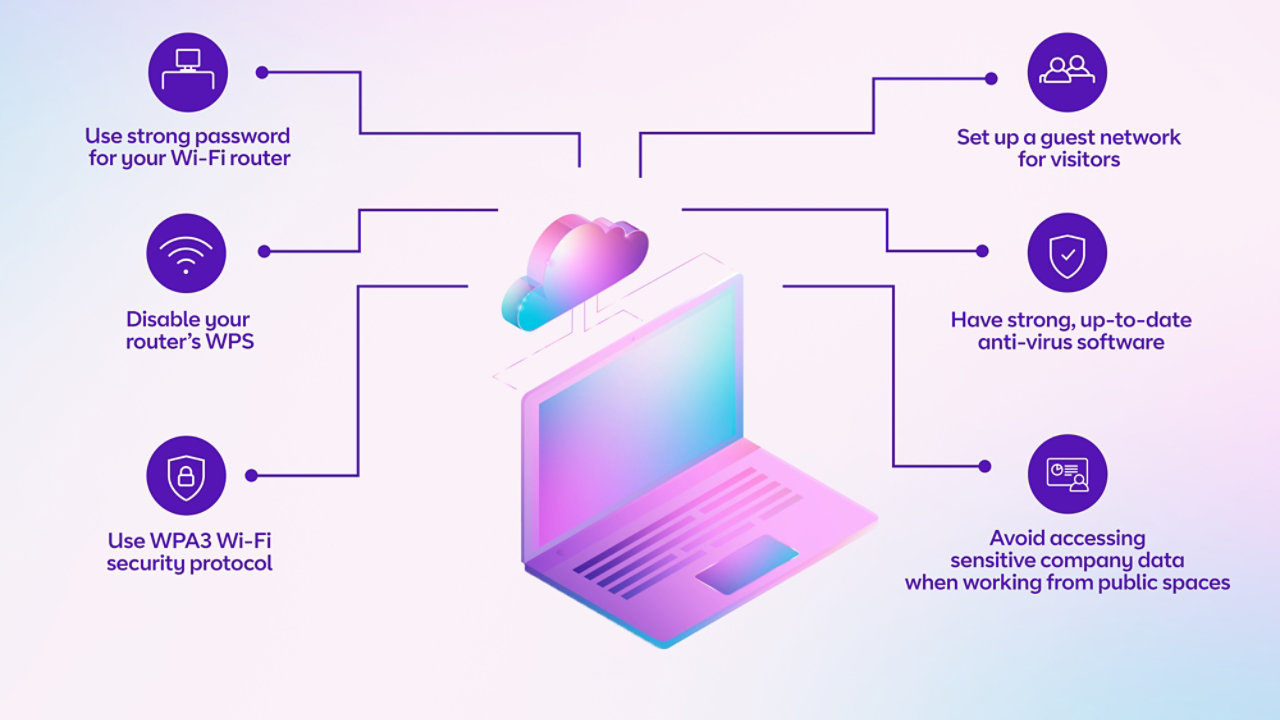How a secure Wi-Fi network keeps your business safe
Wi-Fi is essential for running a modern small or medium-sized business, but if it’s not properly secured, it can expose your network and data to cyber threats. This guide explains how secure Wi-Fi works, why it matters, and what practical steps you can take to keep your business safe and resilient.
Almost all businesses today use Wi-Fi. You might be reading this article over your Wi-Fi network right now, for example.
This way of connecting wireless to the internet is essential for most companies to operate. However, if it’s not properly secured, it can leave your business vulnerable to cyber attacks.
Ensuring your Wi-Fi network is protected from potential threats is an essential part of cyber security for small businesses.
Stay vigilant and assume any device can be compromised at any time. Act upon any suspicious activity
Why is secure Wi-Fi so important?
Unless it’s secured properly, your Wi-Fi network can be one of the easiest points of entry for criminals who want to access your company’s data.
Therefore, making sure you have a secure Wi-Fi connection for your premises is a simple, yet fundamental step in keeping your company safe.
Think of it as security hygiene. You’d never consider leaving the front door of your house wide open, and having an unsecure Wi-Fi network would be the digital equivalent.
The risks of poor Wi-Fi security include loss of important operational data, business disruption, reputational damage and financial loss from digital theft or fraud. So don't overlook its importance.

Securing your workplace Wi-Fi
Following these three steps will get you there:
- Improve your router security
- Ensure the log-in requires a complex password. Use a unique and strong password that’s hard to guess. Your Wi-Fi router may already have this set up for you but check whether it is universal or unique to you. If it’s the former, change it.
- Disable the Wi-Fi Protected Setup (WPS). This feature allows new devices to connect to your network without typing a long password. However, it can be relatively easy for hackers to guess the short password. Turning it off makes unauthorised access much harder.
- Use encryption
Encryption is a great way of stopping anyone intercepting your data when it’s transmitted via Wi-Fi. Your Wi-Fi network will use a system for doing this called an encryption protocol. As the data leaves your router it will be scrambled, and then unscrambled when it arrives on your device – and vice versa. When your device is logged on to your router (using your secure password), both device and router will automatically know how to scramble and unscramble the data.
If you can, use WPA3, the latest and most secure Wi-Fi security protocol. New routers will use this by default. However, some devices may not support this, so you might have to switch your router to WPA2 (there should be an option to do this when you set it up). That’s OK, but not as effective as WPA3.
- Ensure your Wi-Fi router is in a safe location
Many Wi-Fi routers have a sticker on the side, or a small card underneath, with their password. Make sure members of the public won’t be able to find this.
Think about remote and mobile security
Remote working has a lot of advantages, but it can create security issues if the digital environment your employees are operating in isn’t as safe as your office.
Take time to do the following:
- For home networks
Ask all employees who work from home to follow the same steps as above to secure their home Wi-Fi. - For public Wi-Fi
Ensure everyone avoids using these networks (such as in cafés, stations or hotels) for sensitive work tasks, such as accessing financial information or customer data. It’s easy for criminals to steal information that’s being transmitted across open networks such as these.
Consider using Wi-Fi controls and unified threat management
A centralised Wi-Fi control system can help to take your security management up a notch and may make sense for larger businesses or ones with more complex security needs.
It will allow you to manage everything from a single dashboard, such as who is connected to the Wi-Fi network and which devices are being used. You can instantly block any suspicious activity and restrict who and what is connected (e.g. by blocking access from people’s personal devices).
Using a unified threat management (UTM) system can help to simplify your security controls, including your Wi-Fi security, by combining multiple security features into a single platform.
These can include:
- Wi-Fi controls.
- Firewall protection.
- Intrusion detection and prevention.
- Monitoring for viruses.
- Web content filtering (e.g. preventing access to unsafe websites).
- Application control, preventing people from downloading and running unsecure apps.
Both systems can offer automated monitoring and alerts, so you’ll know immediately if there are any threats to your business’s security.
Key takeaways
If you only remember three things, make them these:
- Check whether you have a weak default password on your router or a password that is universal to every router. In either case, change it to a complex one that’s hard to guess.
- Physically secure your Wi-Fi router so only your employees can access it.
- Ask your employees who work from home to follow the same procedures as you do in the office. Particularly, ask them to check if they have a complex Wi-Fi password.
Don’t forget, this is just a starting point. Securing your Wi-Fi, and everything connected to it, is a vital element in safeguarding your business. Start taking steps to ensure you’re fully protected as soon as possible.


